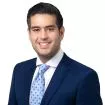Trademark applicants encounter refusals from the United States Patent and Trademark Office ("USPTO") based on a myriad of issues. Section 2(d) likelihood of confusion refusals and Section 2(e)(1) mere descriptiveness refusals or disclaimer requirements based on descriptiveness are often issued by the USPTO.
These refusals have applicants scratching their heads to determine whether to pursue an appeal to the Trademark Trial and Appeal Board (the "Board"). If only there was some insight into how the Board may decide a case.
The one and only TTABlogger, to whom the author and many others are indebted, reviewed and analyzed the decisions concerning Section 2(d) and Section 2(e)(1) refusals that the Board issued in 2022. The Board issued 200 decisions regarding Section 2(d) refusals and 51 decisions regarding Section 2(e)(1) refusals. The Board reversed 15 of the Section 2(d) refusals and six of the Section 2(e)(1) refusals, which provides an affirmance rate of 92.5% and 88.2% respectively.
The Board consistently reminds us, for better or for worse, that each case must be decided on its own merits. But for those trying to read the tea leaves, it's hard to discount the seemingly uphill battle of an appeal. It's also important to consider the potential effects of a final decision issued by the Board. A negative decision could significantly impact an owner's availability to obtain registered rights or potential enforcement efforts. In some instances, claim preclusion, a.k.a. res judicata, may apply when an applicant attempts to refile for its same mark. Further, a final decision could be used as ammunition to undercut an owner's alleged rights in a mark or a claim of likelihood of confusion. Therefore, the Board's affirmance rates, along with the pertinent facts of each case, should strongly be considered when deciding to file an appeal.
The content of this article is intended to provide a general guide to the subject matter. Specialist advice should be sought about your specific circumstances.


